Secret to avoiding the crowds in Italy’s hottest spots: A 2024 travel guide
More Australians than ever before are travelling to live la dolce vita - but what can you do if you're heading to Italy among the mega-crowds of European summer? We've got the insider tips.
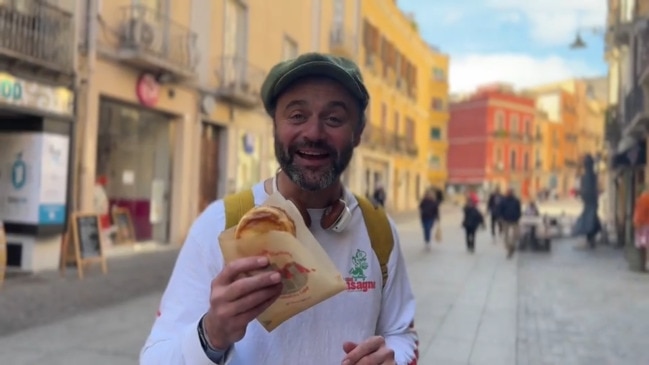
Lifestyle
Don't miss out on the headlines from Lifestyle. Followed categories will be added to My News.
Cupid’s arrow struck at point-blank range. “Ciao,” called the barista in the bustling cafe, “Cosa vorresti?” He was simply asking me what I wanted, but I, all of 14 years old, on my first overseas family holiday and surrounded at the cologne-clouded counter by Romans in crisply cut suits, was rendered mute.
It was love – not with the barista, but with Italy. The buzz of the bar, the click of heels on terrazzo floor, the whine of a Vespa nearby, the energy. This instant addiction triggered a lifelong passion for the Italian language and a future that would include a student exchange in Sardinia, a job on the 2006 Turin Winter Olympics, and a career as a travel writer.
Considering your own affair with Italy? Take a ticket, because this showstopping country, with its intoxicating mix of romantic ruins, seductive scenery and come-hither gastronomy, has never been more desirable. Last year, more than 311,000 Australians paid court, the highest number since counting began. Emanuele Attanasio, Australia manager for ENIT (Italy’s Agenzia Nazionale del Turismo), says: “Beyond Tuscany and Veneto, we are now seeing Australians exploring other regions like Umbria, Puglia, Sardinia, Sicily and Emilia Romagna.”
If you're focused on the places that make Italy famous, here’s a taste of headline destinations from north to south, coast to alps. If you fear being swamped, consider travelling out of season or look for similar alternatives to popular sites. Swap the ruins of Pompeii for perfectly preserved Herculaneum, Pisa’s leaning tower for Bologna’s askew Garisenda; stay at Murano or Burano instead of Venice. But go sooner rather than later. As the saying goes, “Chi dorme non piglia pesce.” He who sleeps, doesn’t catch fish.

SARDINIA
WHY: Equidistant from Italy and Africa, the Mediterranean’s second-largest island has its own ethnicity and ancient dialect, Sardu. It’s famed for turquoise waters and white-sand beaches, but going beyond the tourist hotspots of the Costa Smeralda reveals ancient culture including the Nuraghe, 7000 stone towers, purpose unknown, dating back to the Bronze Age.
WHERE TO STAY: Sardinia is family nirvana. Go wild camping or base yourself at La Chia Laguna Resort. Kids love the mini train to the beach and summer hip hop, callisthenics, fencing or football camps. Rent a car to explore.
DRINK AND DINE: Sardinia is one of five global Blue Zones, which means Sardi are known for their longevity and tend to have a healthier lifestyle than most of the planet. Make the most of their traditional diet at Sa Mandra, near the city of Alghero, a working farm dishing out home-grown meals.
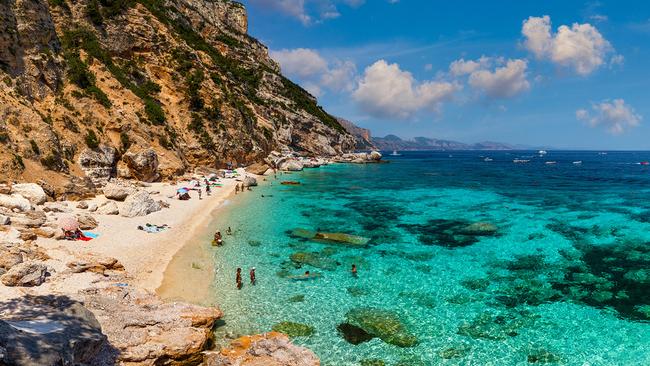
DO THIS: Splash into the breathtaking beach at Cala Mariolu. Luminescent blue sea meets a shore flecked with pebbles oscillating between snowflake white and pearlescent pink for a screensaver-worthy view. For salty solitude, take a ferry out to the Maddalena Islands in the north.
AVOID THE CROWDS: Leave the coast and summer heat-seekers behind for mountain niches such as fortress-topped Burgos. Winter here has limited appeal as shops are shuttered and streets fall silent in coastal holiday villages.
ALSO SAY SI TO: An island, off an island. That’s Salina, the verdant exception of the volcanic Aeolian Islands cluster off northeast Sicily. Like Sardinia (or Pantelleria further south) a distinctive culture and natural bounty are irresistible.
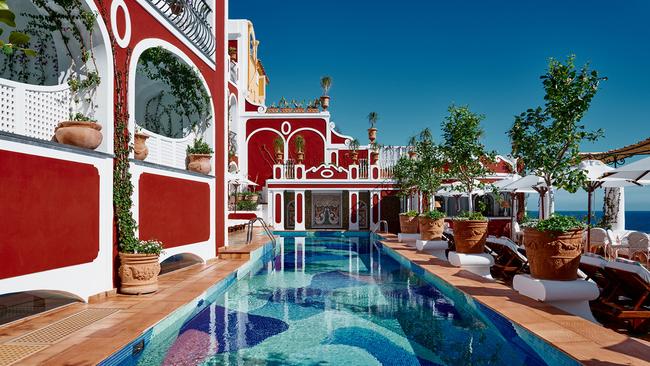
AMALFI COAST
WHY: A mere hour’s drive south from gritty gateway city Naples starts a hill-hugging ribbon of coastal road that stretches 50km from clifftop Sorrento to the port of Salerno. Reminiscent of a colour-saturated film set, sapphire sea, neon lemons and fuchsia bougainvillea pop against 13 pastel-perfect villages, including Positano and Ravello.
WHERE TO STAY: Splash the cash for a once-in-a-lifetime stay. Positano’s Le Sirenuse is the original Amalfi Coast glamourpuss and this summer guests will dive into its latest artwork, literally. Swiss artist Nicolas Party has recreated the pool mosaics in an abstract form reminiscent of earth, water, and sky.
DRINK AND DINE: Like real pirates, Il Pirata will take your money, but you’ll be thankful. This waterside restaurant spectacularly dug into a cliff wall in the tiny village of Praiano stars fishermanto-fork seafood.
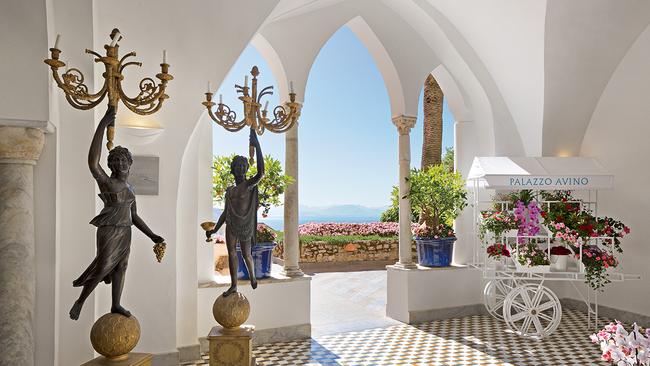
DO THIS: Waft into The Pink Closet boutique in Ravello’s stunning Palazzo Avino hotel for a pair of Attico shoes (perhaps to wear to the Palazzo’s Lobster & Martini Bar).
AVOID THE CROWDS: It’s a fine line between arriving before everyone one else but after the beach bars have popped their parasols for the season. Too early and you’ll be Aperol Spritzless, too late and you won’t snag a reservation at Capri’s La Fontelina for love nor money. That sweet spot is April to May or late September.
ALSO SAY SI TO: Puglia. Former Sydneysider Rob Potter-Sanders spent three years transforming a 16th-century olive farm into boutique hotel Masseria Trapanà near Lecce. He says Puglia is a good alternative to the Amalfi Coast as it’s one of the last emerging destinations in Italy, with some of the most beautiful sandy beaches in the country. His insider suggestions include the coastline from San Foca to Roca Vecchia, and Punta Suina beach.
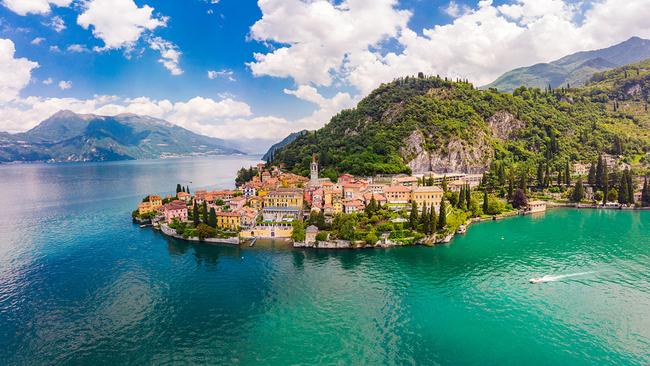
LAKE COMO
WHY: In a game of word snap, you say “Lake Como” and most respond “George Clooney”. Its most famous Hollywood resident was likely lured by the genteel atmosphere, wooded trails and snow-capped peaks juxtaposed against liquid vistas.
WHERE TO STAY: Varenna, on the lake’s less-developed east side, is an ideal base, with stepped cobblestone alleys tumbling down to the lakeshore where a sliver of harbour offers ferry connections to Bellagio and beyond.
DRINK AND DINE: Make like George and dine at Il Gatto Nero trattoria in Cernobbio. Or, in nearby Como, 40-year-old Osteria del Gallo offers casalinga (home-style) cooking with a produce-driven menu.

DO THIS: A villa crawl. Book a tour of Villa Serbelloni above Bellagio, pull up a pew among the exotic flora of Villa Monastero in Varenna or stroll the pale-pink Villa Carlotta in Tremezzo. But if you’re limited to one, make it the romantic Villa del Balbianello with panoramic promontory setting.
AVOID THE CROWDS: With Milan an hour away, weekends can be loaded with serenity-seeking city-slickers. Most make a beeline for upscale Bellagio with its dress-circle lake position. But smaller hamlets such as Laglio (Clooney’s neighbourhood) and Nesso are also paintbox-pretty, and hiking the 10km Greenway from Colonno to Griante passes hidden highlights such as Ossuccio.
ALSO SAY SI TO: Dolomite lakes. A whirlpool of lakes swirl around Como from sporty Lake Garda to Italian favourite Lake Orta. But little surpasses the relatively empty, bracing Dolomiti alpine lakes in summer like Lake Landro or Lake Limides, a four-hour drive north.
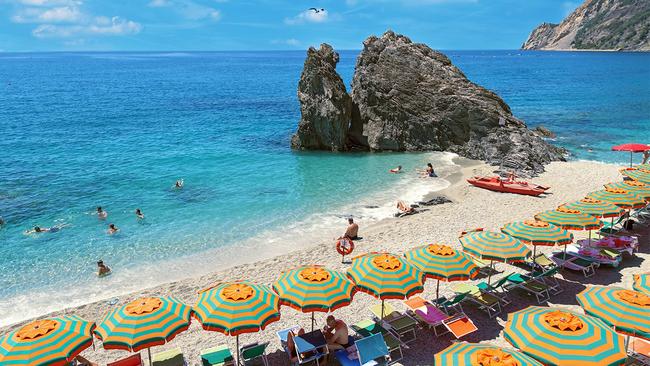
CINQUE TERRE
WHY: Because this cluster of five Unesco-listed villages (Riomaggiore, Manarola, Corniglia, Vernazza, and Monterosso), flung like a fisherman’s net over a stretch of northern Italian coast, is as swoon-worthy as it looks on Instagram. The former medieval fortified settlements have distinct personalities – from beachside Monterosso’s Riveriera vibe to the finger-width wedge of pretty Vernazza.
WHERE TO STAY: Staying in one of the villages gives you the best chance to savour the calm before day-trippers arrive and after they leave. The Cinque Terre Residences in lively Riomaggiore is a family boutique hotel with the rarities of a citrus-laden garden, luggage lift and parking.
DRINK AND DINE: Tucked into Riomaggiore’s waterfront, Rio Bistrot is arguably the best trattoria for seafood in the Cinque Terre.
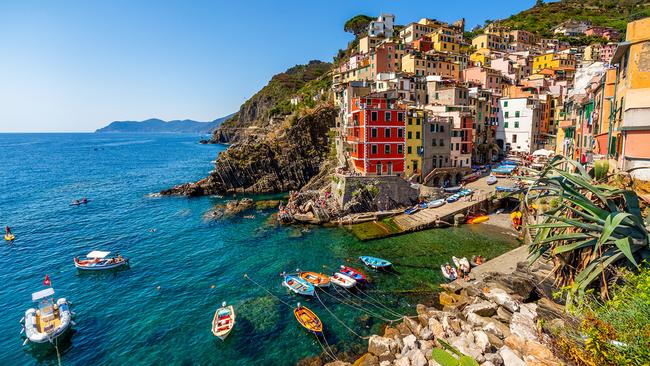
DO THIS: The restored 1km Via dell’Amore (part of the five-hour Sentiero Azzurro path connecting the five villages), carved from hard rock face between Riomaggiore and Manarola, reopened in 2023. Also explore the higher hinterland hikes, where few venture.
AVOID THE CROWDS: A million visitors a year swamp Manarola (population 4000), prompting its tourist office president to say last year that it’s like living in a tin of sardines. This is an off season-only destination, but if you have to go in a peak period, at least avoid cruise ship chaos by checking nearby La Spezia’s port schedule.
ALSO SAY SI TO: Hop over the border from coastal Liguria into the neighbouring region of Piedmont. Here, Bra – the birthplace of the slow-food movement – is only one highlight of this gastronomic wonderland. Australian cookbook author Sophie Hansen loves the area for its Barolo wine, aperitivo culture and local osterias. “Italy’s northwest has somehow stayed off the mainstream tourism map and that’s good news for those of us who love it,” she says. Sophie leads food tours in October to regions such as the Cinque Terre.
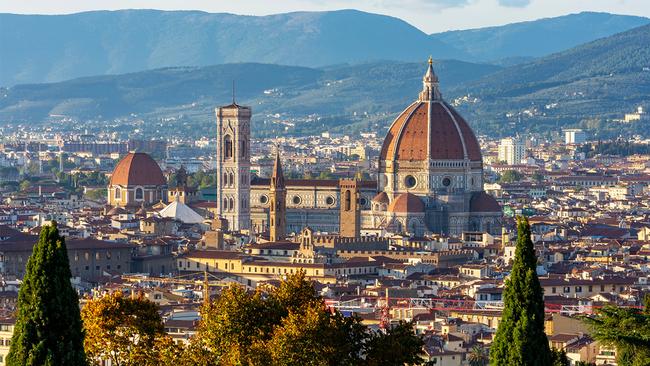
FLORENCE
WHY: It’s as elegant and sophisticated as forever-frenemy Rome is raw and dynamic. Multiple art galleries cascade with treasures by hometown heroes Leonardo da Vinci, Michelangelo and Boticelli, and the World Heritage-listed historical central district is wonderfully walkable, plus the shopping is next level. Florence forever.
WHERE TO STAY: Temper an Amalfi splurge with savings in Florence by staying a monastery or convent from €35 ($57).
DRINK AND DINE: Florentine pleasures can be simple. Pick up fresh produce from Mercato di Sant’Ambrogio (the market’s buzzing Trattoria da Rocco is a top tip for an inexpensive lunch) to picnic in the Boboli Gardens.

DO THIS: After eight years of renovation, the Vasari Corridor has just reopened. Built for Cosimo I de’ Medici to glide cross-city discreetly in the 1500s, the elevated corridor travels from the Uffizi Gallery over the Ponte Vecchio into the Palazzo Pitti.
AVOID THE CROWDS: Florence is perennially popular. Book first (8.15am) or last entry (6.20pm) tickets to the Galleria dell’Accademia. The Uffizi Gallery is open until 10pm Tuesdays.
ALSO SAY SI TO: A Tuscan hilltop town. Stick with Florence, but a crowd-dodging solution is staying within a 75-minute radius in a bucolic hilltop town like medieval Montepulciano. Famed for ruby-red Vino Nobile wines and its eyrie location, it’s a holiday within the holiday.

When is the best time to visit Italy?
Side-step August; go early season or September when post-blitz serenity descends and the sea is at its warmest.
What’s the best way to get around Italy?
Italy has one of Europe’s best train travel systems, including the 300km/h Frecciarossa (“Red Arrow”) trains. Eurail Pass options range from four days to three months; there’s an Italy pass option that ranges from three to eight days of travel within a month.
Which Italian island should I visit?
Sicily is the island to be, in part thanks to TV shows such as The White Lotus and Ripley being filmed there. Based on Expedia accommodation searches, The White Lotus location Taormina is up 75 per cent and the capital Palermo 170 per cent. Expedia travel expert Sarah King says more than 40 per cent of travellers say they’ve researched or booked a trip somewhere after seeing it on the screen.
Originally published as Secret to avoiding the crowds in Italy’s hottest spots: A 2024 travel guide




